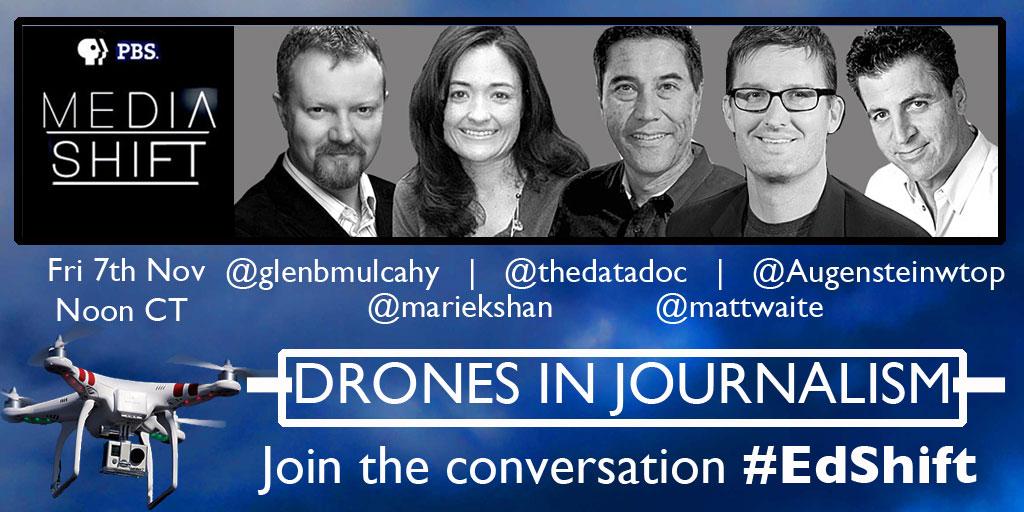
One of the best aspects of working as a journalist is the profession’s unanticipated path of discovery — and opportunity. My newly found knowledge of drones is a recent example of this.
It started in late July 2014 when an editor/friend at The Hartford Courant asked me if I’d be willing to write an essay about “the future of journalism.” The Courant would be celebrating a major milestone in October 2014 — its 250th anniversary. As the nation’s oldest continuously published newspaper, the Courant spent the first part of 2014 examining the past in commemorative special sections. For the big anniversary date, editors wanted a handful of former Courant editors and reporters to consider the future in their respective fields.
Since my current job at UConn involves paying attention to digital trends, interactive communication technology and journalism, I agreed to take on the assignment. Researching “the future” meant I could graze on a whole bunch of fascinating topics, including:
- “Man-computer symbiosis,”
- Robot journalism,
- The Internet of Things, atmospheric networking, and sensor journalism,
- Wearables, augmented reality and virtual reality,
- Brain-computer interfaces,
- Social media and the “consumer desire for fame,”
- Neo-luddism,
- And lastly, drones.
I had a passing knowledge of drones. A golf enthusiast friend of mine once detailed for me his intent to buy a recreational drone and fly it over local golf courses to capture video of each hole. I guess that could be useful. For news reporting though, especially photography and videography, I’d heard drones being called a game-changer.
I’d read about University of Nebraska-Lincoln Journalism Professor Matt Waite and his experimental drone journalism lab. I saw Waite in person when he spoke at the 2013 Journalism Interactive Conference in Gainesville, Florida, and I watched him fly a drone in the conference hall during Amy Webb’s annual tech trends talk at the 2013 Online News Association Conference in Atlanta, Georgia. See my pic of that event below:

Meanwhile, in Connecticut, we had a few high-profile “drone incidents.” In February 2014, a freelance videographer for WFSB-TV flew a drone over a fatal Hartford accident scene, irritating the police. That freelancer later filed a lawsuit against the cops for barring him from using the drone.
A couple of months later, a woman at Hammonasset Beach State Park in Madison, Connecticut beat up a teenager for flying his drone over her personal space. She was arrested for assault.
There was also this amazing drone video of a March 2014 building explosion in Harlem posted by the New York Daily News. And in April 2014, Connecticut’s legislature began debating whether to enact state laws to regulate drone use.
By the time I wrapped up my #futureofjournalism essay for the Courant — “Media: Radical Shift in Control of the News,” I’d become proficient in the topic of drones and journalism.
The publication of that article on October 18, 2014 and its mention of drones led to my next opportunity. MediaShift’s Education Curator Katy B. Culver read my essay, and invited me to participate in a Twitter chat about drones in journalism.

Prepping for that November 2014 #EdShift chat meant even more research on drones and my discovery of a FAA database of commercial drone use applications. I started poking around the database to see if there were any applicants from Connecticut or who worked as journalists.
I love that in journalism any unused information from one story can lead to another story. I made a point to check the database once a month. Once I saw that three small Connecticut entrepreneurs as well as big-time Hartford insurer Travelers Corp. had applied in February 2015 to use drones, I pitched a news story to the Courant.
I crossed my fingers that no other reporter in Connecticut was paying attention to the topic of drones, since I couldn’t tackle all my interviews until my teaching semester ended in early May. Luckily, the FAA’s database isn’t searchable by state and no one else was crazy/dedicated enough to click through 250+ records to find all the applications from Connecticut folks. In another stroke of luck, the FAA granted approvals to those first four Connecticut businesses, beginning in April 2015.
With good interviews from all the small business owners, Travelers and the FAA, a timely news hook, an unusual topic, and sharp editing from the Courant’s Bernie Davidow, my story — “FAA Green Lights Drone Use For Connecticut Businesses” — topped the front page of the Sunday Hartford Courant on May 17, 2015.
Lesson for my journalism students: Story ideas and opportunities can fly in from any direction. Stay grounded, and pay attention.